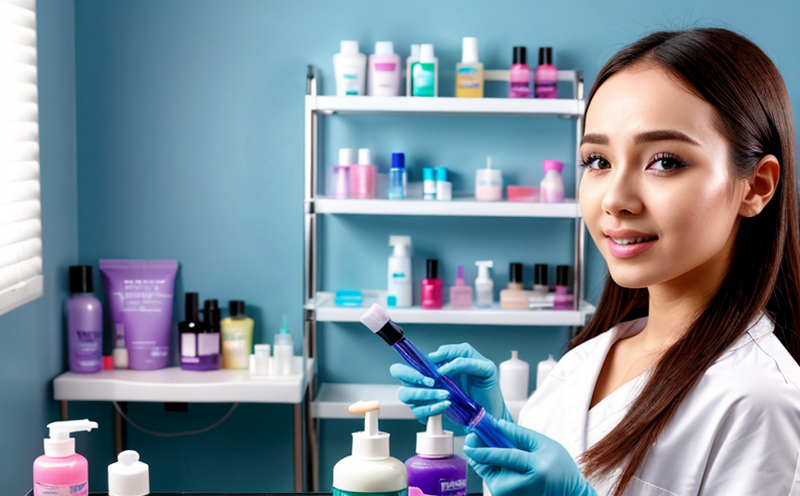ISO 29621 Guidance on Microbiological Risk Assessment for Cosmetics
The implementation of ISO 29621:2018 has revolutionized how microbiological risk assessments are conducted in the cosmetic sector. This standard provides a structured approach to identify, assess, and control microbial risks associated with cosmetics. For quality managers, compliance officers, R&D engineers, and procurement teams, this service ensures that your products meet stringent safety standards.
The process begins by selecting relevant products and raw materials for microbiological testing. The goal is to ensure that the final product does not pose a risk to consumers when used as intended under normal conditions of storage and use. This involves several steps:
- Identification of potential sources of contamination.
- Evaluation of the likelihood and severity of adverse effects from microbial contaminants.
- Implementation of control measures to mitigate identified risks.
The standard emphasizes the importance of scientific evidence, risk-based decision-making, and continuous improvement. It also highlights the need for collaboration between different stakeholders including manufacturers, regulatory bodies, and consumers.
The cosmetic industry is highly regulated with numerous international standards like ISO 29621:2018 being one of them. Compliance with these guidelines not only ensures product safety but also enhances consumer trust in your brand. By adhering to this standard, you demonstrate a commitment to maintaining the highest quality and safety standards.
The application of ISO 29621 involves several key aspects:
- Identification of all potential routes by which microbiological contamination can enter the cosmetic product.
- Evaluation of the effectiveness of existing control measures against identified risks.
- Determination of acceptable levels of microbial presence based on risk assessment.
This comprehensive approach ensures that every step in the production process is evaluated for its potential impact on product safety. The ultimate objective is to produce cosmetics that are free from harmful microorganisms and comply with all relevant regulations.
ISO 29621 also promotes the use of validated methods for sampling, transportation, and analysis of microbiological samples. These validated procedures ensure accurate results which are crucial in making informed decisions about product safety.
In conclusion, implementing ISO 29621 is essential for any company involved in the development or manufacturing of cosmetics. It provides a systematic framework that helps to identify and manage microbial risks effectively. This ensures that consumers receive safe products while maintaining regulatory compliance.
Applied Standards
The application of ISO 29621 is not limited to the cosmetic sector but extends across various industries where microbiological safety is paramount. The standard draws from several internationally recognized guidelines such as:
- ISO 846:2017 – Sterile Medical Devices – Microbiological Requirements
- ASTM E2319-15 – Standard Practice for Determining the Bacterial Load of a Surface by Swab Sampling and Counting
- IEC TR 62606:2014 – Application of Risk Management to Medical Devices
These standards provide additional context and support for the implementation of ISO 29621. They help to ensure that all aspects of microbiological risk assessment are covered comprehensively.
The use of these standards in conjunction with each other allows for a more robust approach to managing microbial risks across different sectors. For instance, the principles outlined in ISO 846 can be adapted and applied within the cosmetic industry to enhance product safety further.
Quality and Reliability Assurance
The success of ISO 29621 lies in its emphasis on continuous improvement and reliability. By integrating this standard into your quality management system, you can ensure that all aspects of microbiological risk assessment are consistently applied.
A key component of this is maintaining robust documentation throughout the process. This includes detailed records of all assessments, decisions made based on those assessments, and any corrective actions taken. Regular audits by internal teams or external experts help to verify compliance and identify areas for improvement.
Furthermore, investing in staff training ensures that personnel are well-versed in both theoretical knowledge and practical skills needed for effective implementation. This includes understanding the nuances of microbiological testing methods as well as interpreting results accurately.
To summarize, quality and reliability assurance play crucial roles in ensuring successful implementation of ISO 29621. They provide a foundation upon which further improvements can be built continuously over time.
Frequently Asked Questions
- Enhanced product safety through rigorous risk assessment.
- Improved regulatory compliance reducing legal risks.
- Increased consumer confidence leading to better market acceptance.
- Optimized resource allocation focusing efforts where they are most needed.





